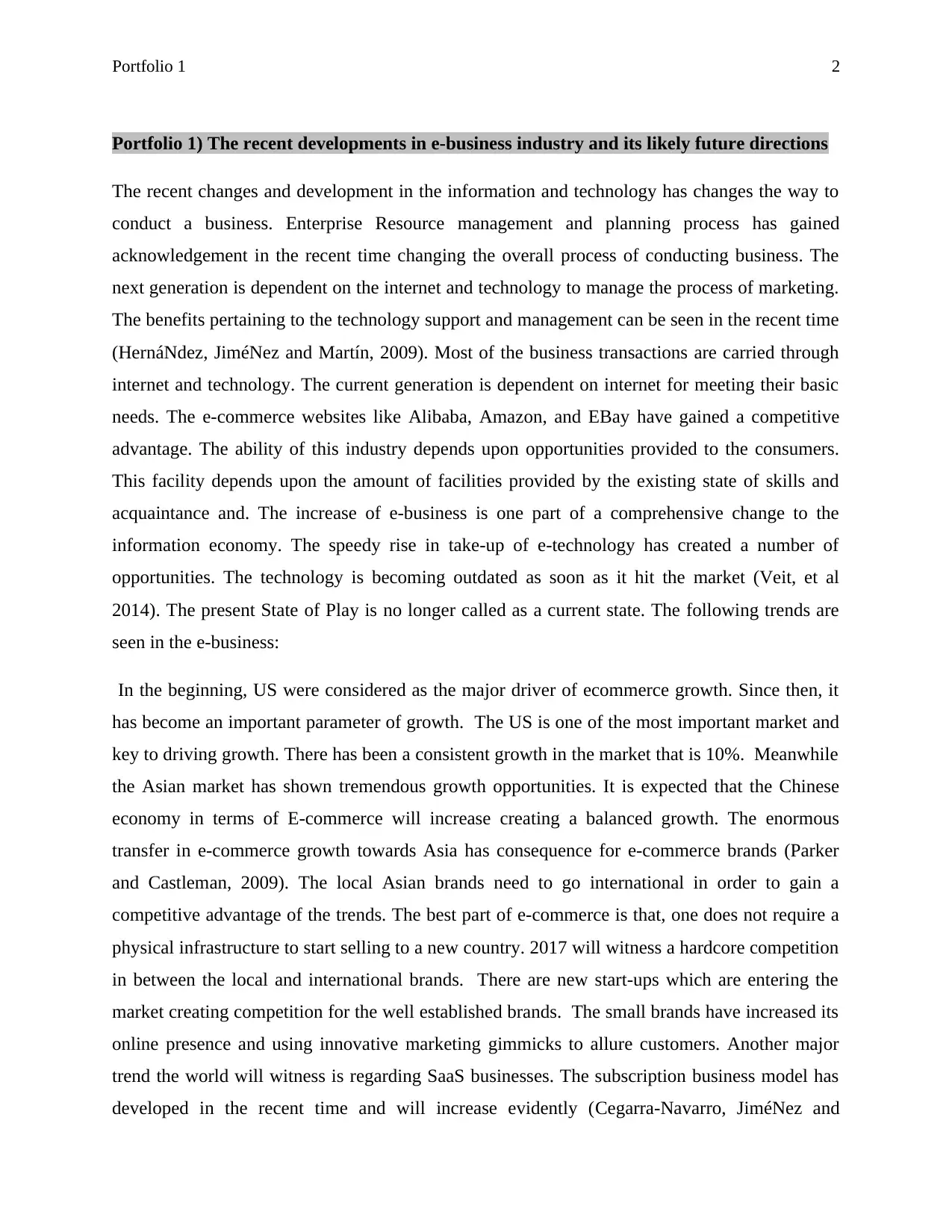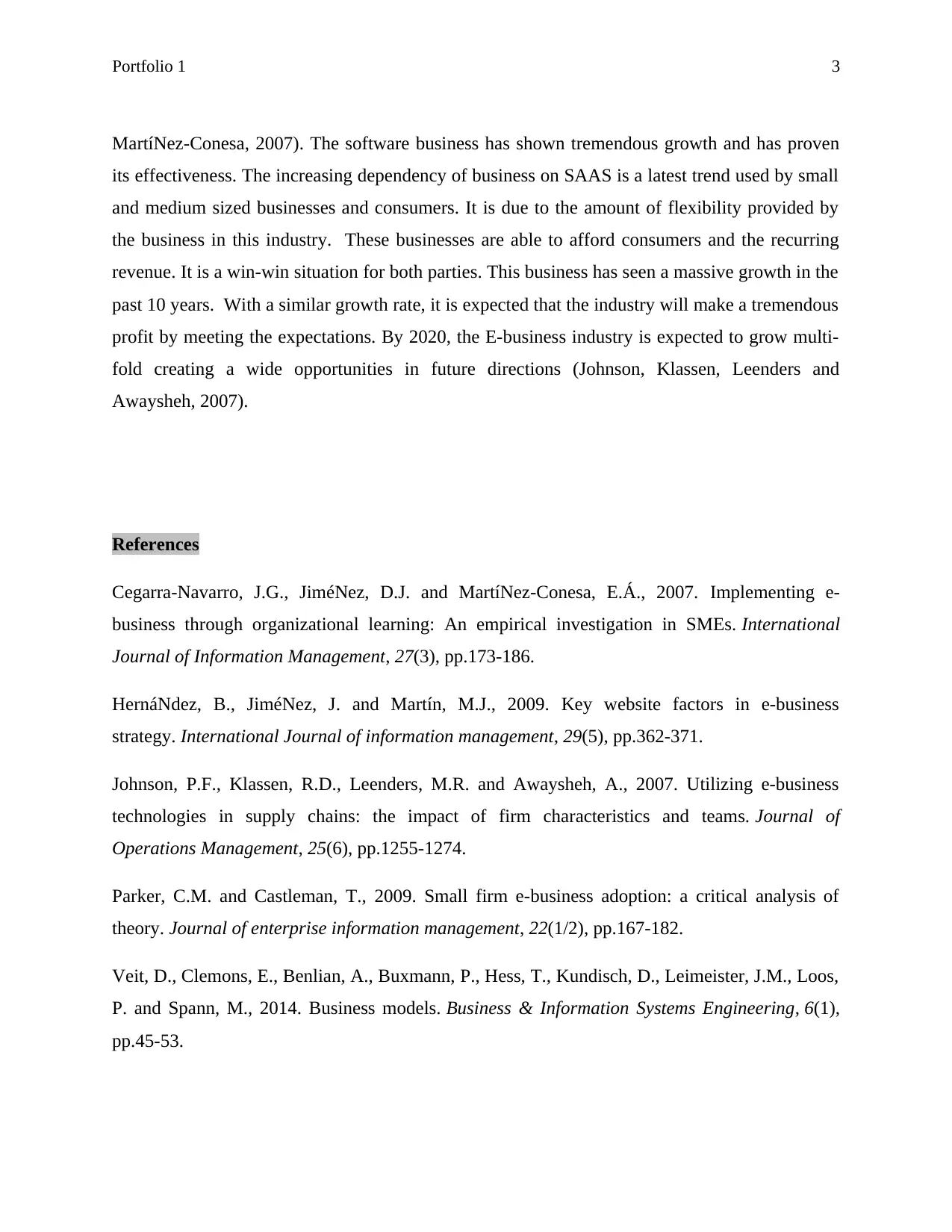E-Business Industry: Recent Developments and Likely Future Directions
VerifiedAdded on 2020/02/23
|3
|839
|32
Portfolio
AI Summary
This portfolio examines the recent developments in the e-business industry and anticipates its future trajectory. It highlights the impact of technological advancements on business operations, particularly the rise of Enterprise Resource Management and the increasing reliance on the internet for marketing and transactions. The analysis covers the competitive landscape, focusing on the growth of e-commerce giants like Amazon and Alibaba and the opportunities they provide. It discusses the shift in e-commerce growth towards Asia, the emergence of SaaS businesses, and the intense competition between local and international brands. The portfolio also references key trends such as the increasing presence of small brands and the adoption of innovative marketing strategies. The work concludes by projecting the continued growth of the e-business industry and its potential for future opportunities.
1 out of 3










![[object Object]](/_next/static/media/star-bottom.7253800d.svg)